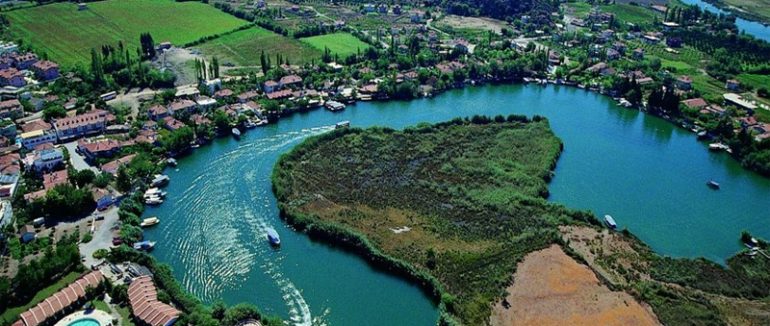Muğla is the seat of Muğla province, which stretches along Turkey´s Aegean coast in the southwest of the country.
Geography
Muğla is about 20 km (12 mi) inland, at an altitude of 660 meters in a pot-shaped small plain surrounded by mountains, and is the administrative capital of a province that includes the popular tourist resorts of Bodrum, Marmaris and Fethiye.
Places of interest
Although it is close to major resorts, Muğla has only recently begun to attract visitors. Sights of interest in the town include:
the Ottoman Empire-era bazaar (Arasta) - marked by a clock tower built by a Greek craftsman named Filivari Usta in 1895,
Kurşunlu Cami - a large mosque built in 1495
Vakıflar Hamam - a Turkish bath which dates back to 1258.
The old quarter of Muğla - on the slopes and around Saburhane Square (Meydanı), consisting of about four hundred registered old houses dating from the 18th and 19th centuries, many of which are restored. These houses are mainly in the Turkish style characterized with hayat sections ("courts") entered through double-shuttered doors called kuzulu kapı ("lamb doors") and dotted with chimneys typical of Muğla, but there are also a number of "Greek" houses. The differences between the two types of houses may have as much to do with the extent to which wood or stone were used in their architecture, and whether they were arranged in intraverted or extraverted styles, as with who inhabited them previously.
Muğla City Museum - has a good collection of archaeological and ethnographical artefacts, as well as 9 million years old animal and plant fossiles recently discovered in Kaklıcatepe nearby.
The city is also home to Muğla University. The local football club, Muğlaspor currently apply their trade in the third tier of the Turkish football pyramid.
History
See Muğla Province and Caria for more information on the history of the area as a whole
In ancient times, Muğla was an insignificant settlement in the region of Caria, which was ruled from the larger coastal towns of Halicarnasoss or Knidos. Muğla was part of the Rhodian Peraea, which was subject to Rhodes but not incorporated in the Rhodian state, and bore the Carian name of Mobolla. There are almost no ruins to reveal the history of the settlement of Muğla. On the high hill to the north of the city, a few ancient remains indicate that it was the site of an acropolis. Two inscriptions unearthed within the city are from the 2nd century B.C., attesting to Rhodian domination.
Turkish-era Muğla remained a minor site, as the local ruling dynasty, the Menteşe, ruled from nearby Milas. Muğla finally acquired regional importance after it replaced Milas as the seat of the subprovince (sanjak) under the Ottoman Empire in the 15th century. The sanjak carried the name Menteşe until the Republican Era, when it was renamed Muğla after its seat of government.
Modern Muğla
A relatively small town of 20,000, and often overlooked by visitors to near-by coastal resorts, Muğla has received new life with the founding of Muğla University in the 1990s. Today, the university boasts a student community of 16,000, which has opened the city to the outside world. Also in recent years, a major program of restoration of the city's architectural heritage has enhanced local tourism.










